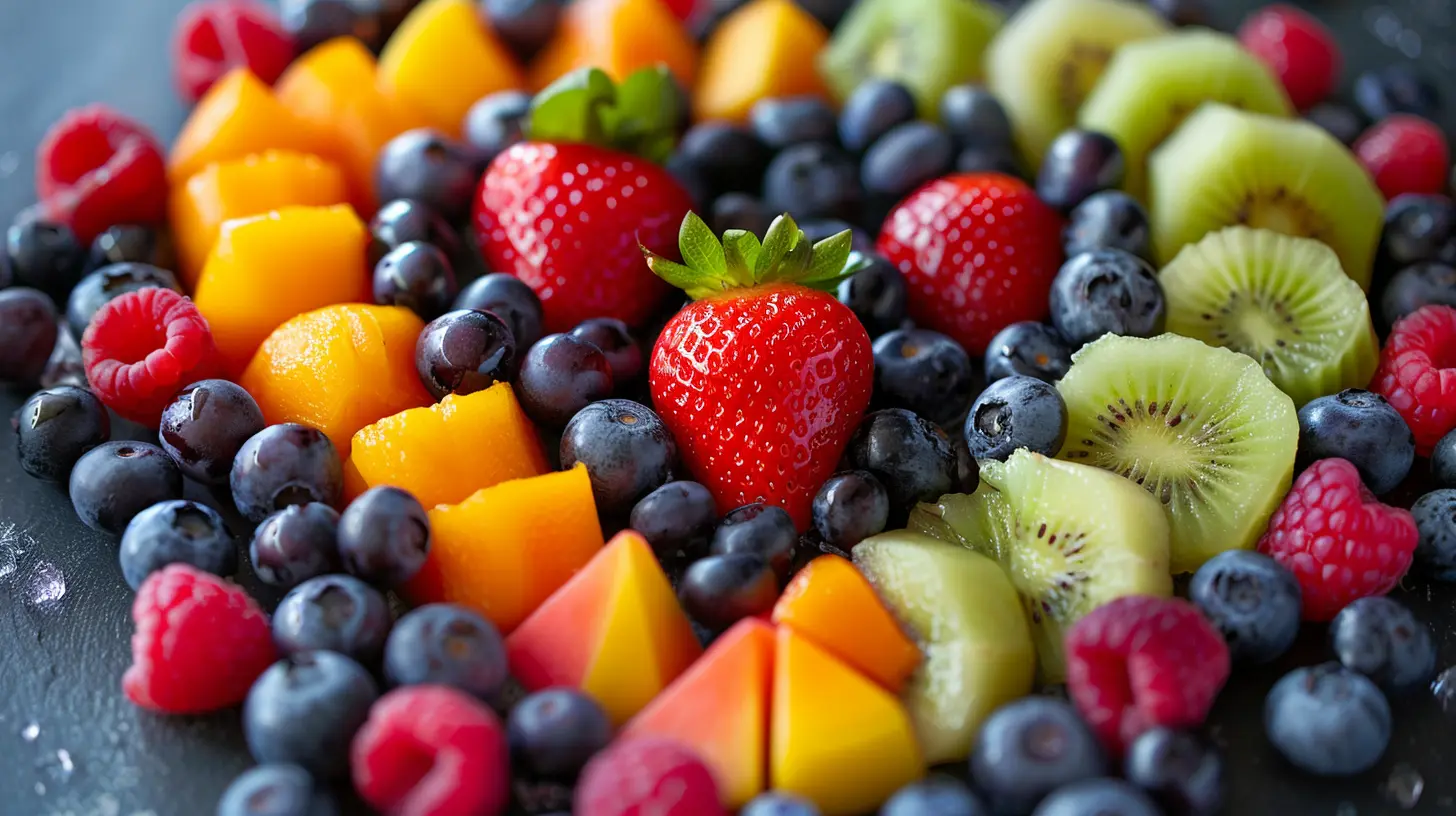Encouraging Healthy Eating Habits in Adolescents
23 October 2025
Raising teenagers is a rollercoaster ride—one day they're eating everything in the fridge, and the next, they’re living off chips and soda. If you're a parent trying to navigate this food frenzy, first of all, hats off to you. It’s not easy! But here’s the good news: instilling healthy eating habits in adolescents isn’t impossible. It just takes a little creativity, patience, and a lot of understanding.
Let’s dive into how we can guide our teens toward making healthier food choices, without turning every dinner into a battlefield.
Why Healthy Eating Matters in Adolescence
Before we get into the “how,” let’s talk about the “why.” Adolescence is a critical time for growth and development—physically, mentally, and emotionally. The body is changing fast, and nutrition plays a huge role in supporting that change.Think of food as fuel. You wouldn’t pump low-grade gas into a Ferrari, right? Same goes for your teen’s body and brain.
Proper nutrition during these years can:
- Boost energy and mood
- Support concentration and academic performance
- Promote healthy growth and bone development
- Help maintain a healthy weight
- Reduce the risk of chronic diseases later on
Skipping this part of their development? That’s a recipe for long-term health issues. But the good news? You have more influence than you think—even when it feels like they’re ignoring you.
Start with the Basics: What Does “Healthy Eating” Really Mean?
Let’s keep it simple. Healthy eating means:- Eating a variety of foods from all food groups
- Choosing whole and minimally processed foods
- Drinking plenty of water
- Limiting added sugars, salt, and unhealthy fats
- Eating consistent meals and snacks
It doesn’t mean cutting out pizza forever or banning chocolate. Balance is key, and extremes rarely work—especially with teens.
Understand the Teenage Brain (And Appetite!)
If you’ve ever watched a teen devour an entire pizza in one sitting, you know where we’re going with this.Teenagers need more calories than adults because they’re growing fast. Their hormones are working overtime, and guess what? That also impacts their eating habits. Add peer pressure, social media, sports, academics, and their newfound independence—and you’ve got a complex environment influencing their food choices.
So be patient. It’s not always about rebellion or laziness—sometimes it’s just biology. What we can do is guide them through it without turning it into a power struggle.
Leading by Example: Walk the Talk
Here’s the truth: teens are expert lie detectors. If you’re sipping soda at dinner while telling them to drink water, they’ll call you out. And rightly so.Modeling healthy eating habits is way more effective than lecturing. Let them see you choosing fruits over chips, cooking meals at home, and enjoying a balanced diet. Your actions speak louder than your words—especially to adolescents who are still learning by observing.
You don’t have to be perfect. Just be consistent and authentic.
Make Meals a Family Affair
Family meals are more than just a time to eat—they’re a chance to connect. Numerous studies show that kids who eat with their families regularly are more likely to have healthier diets, better grades, and fewer risky behaviors.That’s a win-win situation, right?
Try to:
- Schedule at least a few meals each week where everyone sits down together
- Keep it relaxed—no phones, no pressure
- Involve your teen in the conversation (yes, even if it starts with grunts!)
- Use the time to model balanced eating and mindful portions
And hey, even if it’s pizza night—sitting down and enjoying it together still matters.
Involve Them in the Process
One of the best ways to get teens excited about healthy eating? Put them in the driver’s seat.Teens crave independence, so give them a role in choosing and preparing meals. Whether it’s planning a menu, shopping for ingredients, or helping with cooking, involving them makes them feel empowered and invested.
Ask questions like:
- “What’s one healthy recipe you’d like to try this week?”
- “Can you help pick fruits for lunches?”
- “Want to cook dinner together on Friday?”
Even picky eaters are more likely to try something they helped make. Plus, you're teaching valuable life skills that’ll stick with them when they’re out on their own.
Smart Swaps, Not Strict Rules
Let’s face it—banning snacks doesn’t work. It usually just makes them want it more (hello, forbidden fruit syndrome!).Instead, focus on healthier swaps. Little changes add up over time, and small victories are better than no progress.
Some ideas:
- Swap soda for fruit-infused water or mocktails
- Choose whole grain bread and pasta instead of white
- Replace chips with popcorn or roasted chickpeas
- Go for homemade smoothies instead of sugary milkshakes
- Trade ice cream with frozen yogurt topped with fruit
It’s all about balance, not perfection. Let them enjoy treats in moderation while offering better options too.
Dealing with Picky Eating or Junk Food Addictions
Most teens go through phases. One month they’ll only eat chicken nuggets, the next—it’s ramen three times a day.Here are some gentle strategies to help without nagging:
1. Don’t make it a battle – Pressure can backfire. Offer healthy options, and let them decide.
2. Keep healthy snacks visible – Out of sight, out of mind. A fruit bowl on the counter does wonders.
3. Limit junk food availability – If it’s not in the house, they’re less likely to eat it.
4. Find healthy versions of favorites – Baked fries, air-popped popcorn, or homemade tacos can still hit the spot.
5. Use positive reinforcement – Praise their efforts, even small ones. “I noticed you chose grapes instead of gummies—awesome call!”
Gentle encouragement beats constant correction every time.
Navigating Social Settings and Peer Pressure
Here’s the deal: teens care a lot about what their friends think. That includes what they eat.So while you might pack a nutritious lunch, they may toss it for fries at the cafeteria. Instead of getting frustrated, use this as an opportunity to have open conversations.
Talk about:
- How food affects mood, energy, and performance
- Being confident in their own choices
- Planning ahead—maybe they eat pizza with friends, but have a healthy snack before or after
- Giving themselves permission to indulge occasionally without guilt
Help them understand that balance matters more than perfection—and that being healthy doesn’t mean being boring.
Managing Emotional Eating
Teen years are an emotional rollercoaster. From stress over grades to friendship drama, emotions run high—and sometimes, food becomes a coping mechanism.Teach your teen to recognize emotional eating by asking:
- “Are you truly hungry, or are you bored/upset?”
- “How do you feel after eating that?”
- “What else might help you relax or feel better?”
Encourage other outlets like journaling, walking the dog, listening to music, or talking it out. If emotional eating becomes frequent or intense, consider speaking with a counselor or therapist. Mental health and nutrition are deeply connected.
Make It Fun (Yes, Really!)
Healthy eating doesn’t have to be dull. Spice things up! Introduce your teen to new flavors, cuisines, and cooking methods.Ideas to try:
- Weekly “Try Something New” dinner night
- International food nights (Taco Tuesday, Stir-Fry Friday, etc.)
- Smoothie bowl breakfast bar
- Build-your-own sandwich or salad stations
- TikTok recipe challenges (pick healthy recipes together!)
When food is an adventure, it becomes an experience—not just a boring routine.
Encouragement Over Perfection
Here’s the truth: you’re not going to win every mealtime battle. And that's okay.What matters is consistency over time. Teenagers are on a path of self-discovery, and your job is to be the compass—not the drill sergeant.
Keep showing up, offering options, and being their safe space. Your love, patience, and guidance mean more than you may realize.
Final Thoughts: Planting Seeds for a Lifetime
Encouraging healthy eating habits in adolescents isn’t about forcing broccoli down their throats or cutting sugar cold turkey. It’s about planting seeds. Some will sprout now, and some may bloom years later when they remember those home-cooked meals or your favorite smoothie recipe.You’re building a foundation—brick by brick, bite by bite—that will nourish them long after they’ve flown the nest.
So don’t get discouraged if you hit bumps along the way. This is a journey, not a sprint. You’ve got this—and more importantly, so do they.
all images in this post were generated using AI tools
Category:
Raising TeensAuthor:

Austin Wilcox
Discussion
rate this article
1 comments
Signe Carey
Great tips for fostering healthy eating in teens!
November 1, 2025 at 4:49 AM


